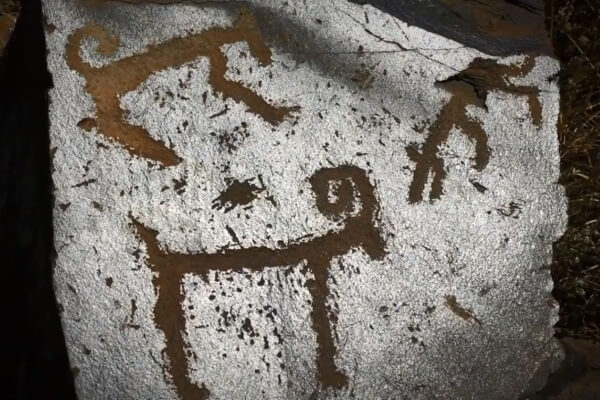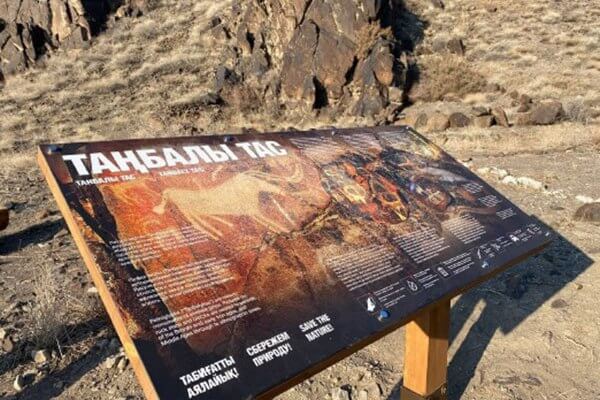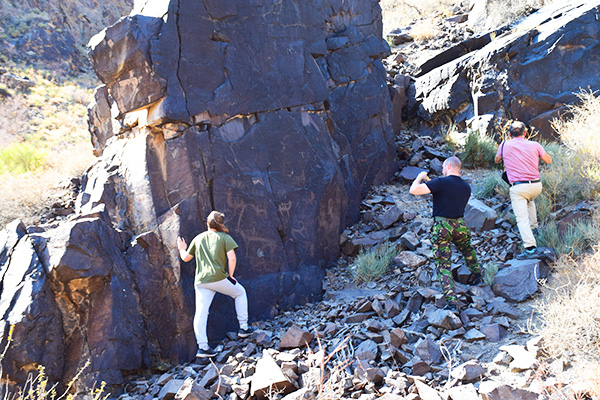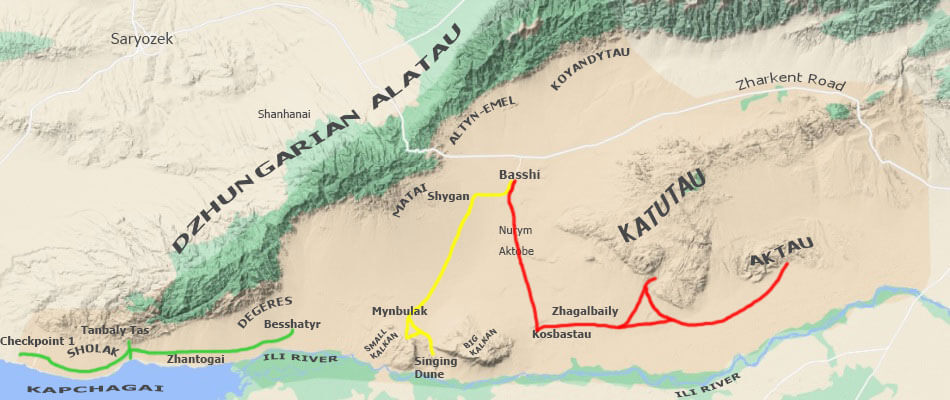Tanbaly Tas or Tamgaly Tas?
"Tanbaly Tas" translates from Kazakh as "stone with signs" or "painted stone." This term applies not only to the rock art in Altyn-Emel but also to other petroglyphs in southeastern Kazakhstan.
For example, downstream from Altyn-Emel on the Ili River lies another petroglyph complex, known by the more Russified name Tamgaly Tas, famous for its Buddha images.
170 km northwest of Almaty (towards Bishkek), in the Chu-Ili Mountains, the Tamgaly tract houses an entire rock art museum, the name of which is currently being changed to Tanbaly, in accordance with the rules of the Kazakh language.
Petroglyphs in Altyn-Emel
The Tanbaly Tas petroglyphs in Altyn-Emel National Park are rock art works from the Bronze, Iron, and Medieval Ages.
This is part of one of the world's major centers of rock art, which stretches along the mountain belt and foothills from the Sayan and Altai Mountains to the Tien Shan and Pamir. Animals, anthropomorphic figures, scenes of hunting, everyday life, migrations, rituals, and geometric symbols (solar and others) are depicted on natural canvases - patinated rocks.
Many petroglyphs are most likely associated with the Besshatyr Mounds in the Ili River valley, since most of the drawings date from the Bronze Age to the Saka Era, although there are also more recent paintings dating from the Middle Ages.
Petroglyphs, the drawings of people and animals carved on stone, give an idea of the lifestyle of the nomadic tribes that inhabited the territory of the Jetysu Region in ancient times.
Images of people and animals (deer, argali, ibex, wolves, snow leopards) reflect a closer connection between man and nature than at the present time. The ancient nomads revered the natural elements and animals living nearby, as their survival and well-being depended on it.
In the Taigak gorge, rare images of two elephants were found, as well as Buddhist inscriptions, the main meaning of which can be reduced to a universal prayer formula, "Om mani padme hum". Their appearance is associated with the spreading of Buddhism among nomads in the 9th-10th centuries and its support by the Mongol conquerors in the 13th century.
The first sketch from this monument of late Buddhism was made in 1856 by the first explorer of the sanctuary, Shokan Valikhanov, who was interested in this religion. Judging by the concentration of the inscriptions, one can suggest that one of the monasteries of Buddhist lamas could have been located in this area (possibly at the present Taigak post of the Altyn-Emel National Park).
Tanbaly Tas Petroglyphs are a rare historical monument that reflects the religious beliefs of nomads, from the pagan era with the cult of the sun (images of sun-headed deities) to the Buddhist culture (lamaist inscriptions).
Tanbaly Tas is of great cultural and historical value and, along with the Besshatyr Necropolis, is under the protection of UNESCO.



Location
The Tanbaly Tas Petroglyphs are located in the western part of the Altyn-Emel National Park in the Sholak Mountains, 17 km from Checkpoint 1 (access from the village of Shengeldy).
Distance from Almaty: about 160 km.

Tourist Attraction
To reach the Tanbaly Tas Petroglyphs, you must enter the national park through Checkpoint 1 from the village of Shengeldy.
In this part of the park there is a visitor center, an observation deck, camping sites, toilets, gazebos.









